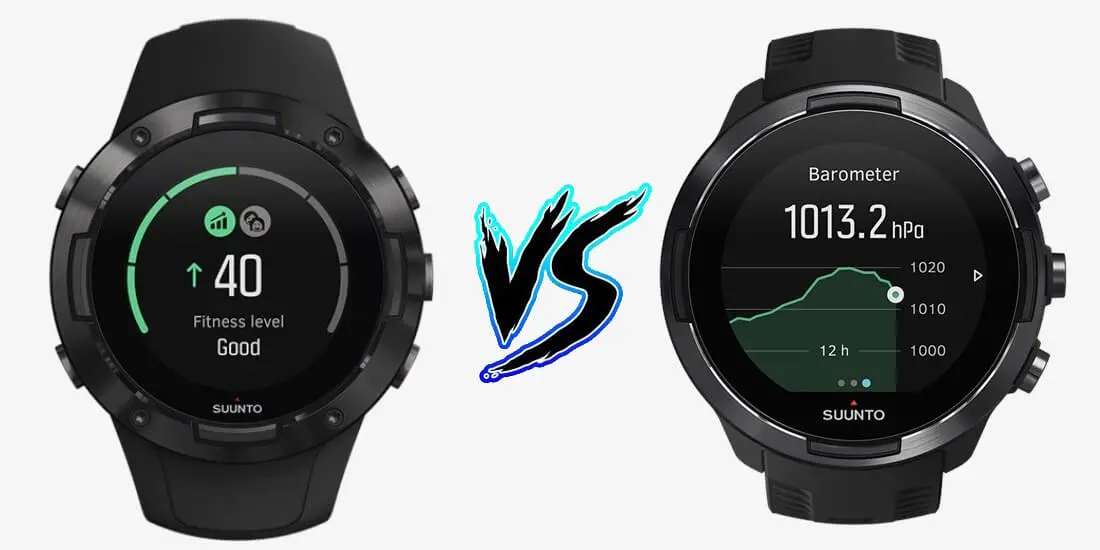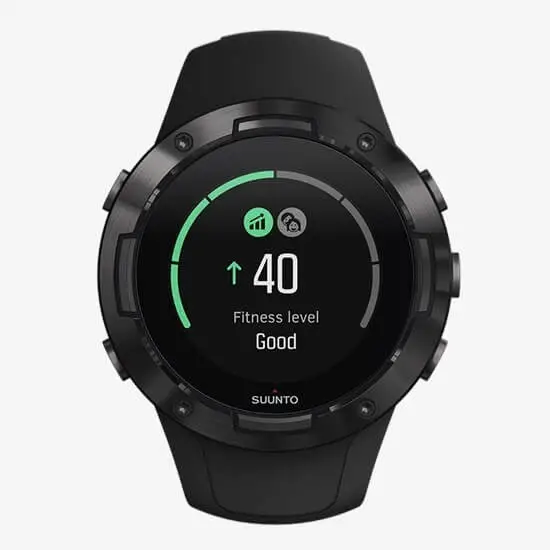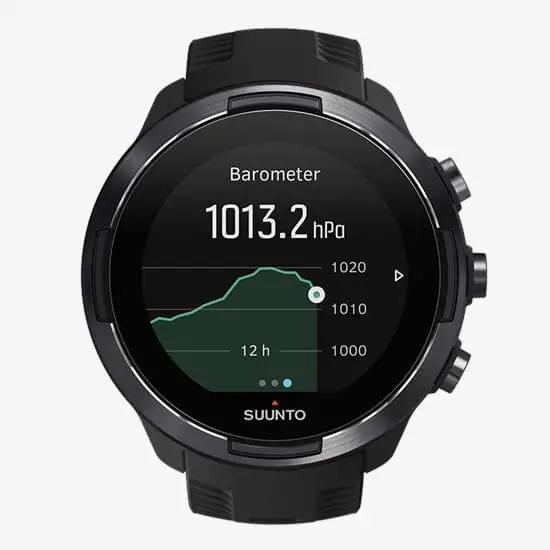The Suunto 9 Baro was released during the latter half of 2018. It’s essentially Suunto’s answer to the Garmin Fenix 5 Plus.
On the other side of the table we have the Suunto 5, which is basically a more affordable version of the Suunto 9, released in May 2019.
Here’s where things get interesting.
Even though the Suunto 5 is cheaper and it doesn’t have a barometric altimeter, it actually has a few features that are missing from the Suunto 9, like personalized training plans and sleep quality score. This adds some interesting twists to this particular product comparison.
The goal of this post is to make the differences between the two watches fundamentally clear. Let’s dive in.
Suunto 5 vs Suunto 9 Baro - Key Differences
Suunto 5
See PriceSuunto 9
See PriceLess Expensive
More Expensive
20H/40H
25H/50H/120H
50M
100M
Suunto 5 vs Suunto 9 Baro - Key Similarities
Features Unique to Suunto 5
Body Resources - Suunto 5 Only
The Suunto Body Resources metric is very similar to Garmin’s Body Battery Score.
Basically, it uses a combination of heart rate data, stress tracking, sleep tracking and time spent exercising to measure your body’s resource score.
The higher the score, the harder you can push yourself during planned training sessions. When your score is low, it’s probably best to take the advice from your watch and give yourself an easy session.
Personalized Training Plans - Suunto 5 Only
Admittedly the training plans offered by the Suunto 5 aren’t quite as advanced as their Garmin equivalents (or those found in popular running apps).
However they are built into the Suunto 5 and you can use them to help formalize your training schedule when targeting a new distance or a new PB.
Stress Tracking - Suunto 5 Only
It’s actually amazing that the Suunto 9 Baro doesn’t include stress tracking.
This has become a key feature for most high-end mulitsport watches and activity trackers from all the best brands in the business. It’s just weird that it isn’t found in Suunto’s flagship watch (the Suunto 9).
Fortunately, the Suunto 5 does offer stress tracking and it’s actually quite a strong selling point for the less expensive unit.
Sleep Quality Tracking - Suunto 5 Only
Even though the Suunto 9 does offer sleep tracking, it doesn’t measure the quality of your sleep.
This is in stark contrast to the Suunto 5 which does measure sleep quality. The bullet points should make the difference between the two quite clear:
- Sleep duration – Duration, average HR during sleep (Both watches)
- Bed times (Both watches)
- Time Awake (Both watches)
- Sleep Quality (Suunto 5 Only)
V02 Max Estimates - Suunto 5 Only
It’s amazing to think that the Suunto 9 doesn’t give you V02 Max estimates, especially when you consider that this stat is available in the Garmin Forerunner 35, which is Garmin’s entry level GPS running watch.
Thank goodness Suunto have made V02 max estimates available in the Suunto 5. It’s something, that most people expect with a well spec’d multisport GPS Watch. Just don’t expect in the Suunto 9 Baro.
Galileo Satellite Tracking - Suunto 5 Only
This isn’t necessarily a deal breaker, because both watches have GPS, GLONASS and even QZSS (Japan’s equivalent of GPS technology).
This is probably the least important difference, but we still have to point out that the Suunto 5 has Galileo tracking, while the Suunto 9 does not.
Features Unique to Suunto 9
FusedTrack GPS Mode
If you have a look at the GPS battery stats of the Suunto 9, you will quickly notice a borderline ridiculous 120 hour setting.
This is achieved by setting the Suunto 9 to FusedTrack mode. This particular setting uses a combination of intermittent GPS signals, the internal compass and the accelerometer, to measure your movements over any given terrain.
To add more clarity, there is actually a 120 second gap between each GPS call. The compass and the accelerometer are used to fill in the blanks between each GPS call.
This is only truly useful for hikers and extremely long distance trail runs. If that’s your thing, you should definitely consider the Suunto 9.
Super Resilient Touchscreen - Suunto 9
It’s pretty neat the Suunto 9 combines a high res touchscreen with an ultra resilient frame. The bezel is made out of stainless steel, the case is made from fibre reinforced polyamide, and the glass is made from sapphire crystal.
With that being said, the Suunto 5 is actually made from the exact same materials, except for the glass, which is mineral crystal rather than sapphire crystal.
The point is, the Suunto 5 is also ridiculously tough. It just doesn’t have a touchscreen.
Barometric Altimeter - Suunto 9 Only
Aside from FusedTrack GPS mode, this is probably the biggest advantage that the Suunto 9 has over the Suunto 5.
The Suunto 9 uses a combination of altimeter readings and GPS data to give you super accurate altitude measurements during your training activities.
The Suunto 5 will still give you altitude data, but it’s not quite as accurate as the FusedAlti™ measurements offered by the Suunto 9.
Compass - Suunto 9 Only
You will have to upgrade to the Suunto 9 if you desperately require an in-built compass.
Again, this is more relevant for hikers, trail runners and adventure racing enthusiasts that genuinely need a compass to help conquer the terrains that they are tackling.
As a short distance specialist, the inclusion of a compass is totally meaningless to me, but if you head out into undiscovered territories often, having an in-built compass could be useful.
Advanced Weather Stats - Suunto 9 Only
The weather functions of the Suunto 5 are rudimentary in comparison to the Suunto 9. In short, you can unlock the following weather features with the Suunto 9.
- Sunrise/sunset times
- Sea level pressure
- Automatic alti/baro profile
- Temperature
- Temperature resolution
- Pressure resolution
- Move altitude graph in Move summary
- Temperature display range
- Storm alarm
In contrast, the Suunto 5 only offers:
- Sunrise/sunset times
- Move altitude graph in Move summary
If weather stats are important to you, it’s pretty clear that you should go for the Suunto 9.
So which one should you buy?
This might seem a bit controversial, but in my opinion, the Suunto 5 is a much better choice for most people, even if it’s the cheaper watch.
Even though it lacks the barometric altimeter, it makes for this weakness with the following unique strengths (that aren’t found in the Suunto 9):
- Body Resources Score
- Stress Tracking
- V02 Max estimates
- Sleep quality score
- Galileo Satellite tracking
- Personalized training plans



